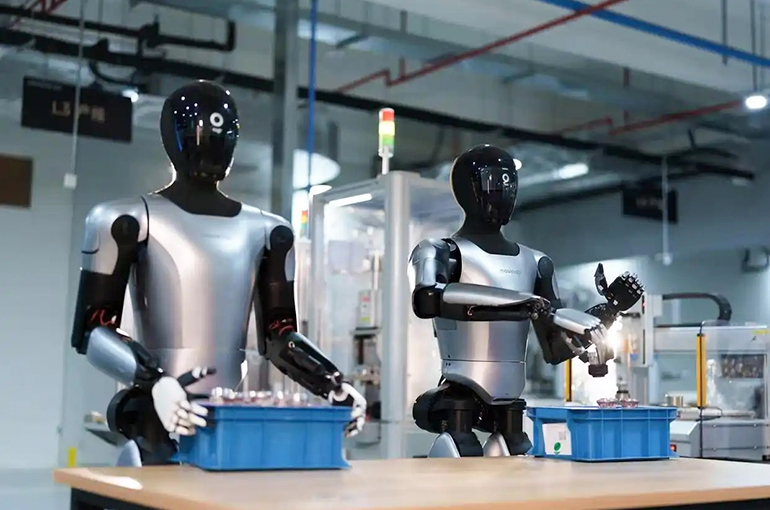 Midea, Other Chinese Home Appliance Giants Are Betting Big on Humanoid Robots
Midea, Other Chinese Home Appliance Giants Are Betting Big on Humanoid Robots(Yicai) July 14 -- China’s leading home appliance makers, including Midea Group, Haier Group, and Hisense Group, as well as top cleaning and kitchen gadget producers are pouring more resources into humanoid robotics to fuel their next growth surge.
Over the next three years, Midea plans to invest at least CNY50 billion (USD7 billion) developing cutting-edge technologies, including artificial intelligence, robots, and embodied intelligence, Wang Jianguo, vice president of the Foshan-based company, announced last week.
Robots have begun replacing people in industrial settings and they hold even greater promise for everyday life, such as helping the elderly at home, Luo Qingqi, a senior director of PaLe Consulting, told Yicai. But building a truly capable android requires five core industries -- batteries, chips, motors, software, and mechanical systems -- and vast amounts of training data, so teaching them to do housework will take time.
“Appliance leaders are still in the ‘opening phase’ of humanoid robotics,” Luo noted. “This segment is expected to become their next growth engine.”
Their shift into robotics also reflects slowing growth in the traditional home appliances market, according to Lu Hanchen, director of the GGII Robot Industry Research Institute. These companies need to find new growth points, Lu added.
They can lean into their advantages in motors, sensors, structural components, supply‑chain management, vast home‑user data, strong brands, and sales networks to develop practical robots tailored to specific needs, Lu pointed out.
“Home service robots could become the industry’s ‘second growth curve,’” Luo said. “But technical breakthroughs and cost control will determine who ultimately wins.” He urged appliance makers to focus their research and development efforts on real, high‑demand scenarios to capture market share over the next decade.
The truly widespread adoption of home service robots will not arrive until after 2030, with only firms that boast integrated technologies, defined scenarios, and cost controls prevailing, according to the GGII Robotics Industry Research Institute.
Editors: Tang Shihua, Martin Kadiev